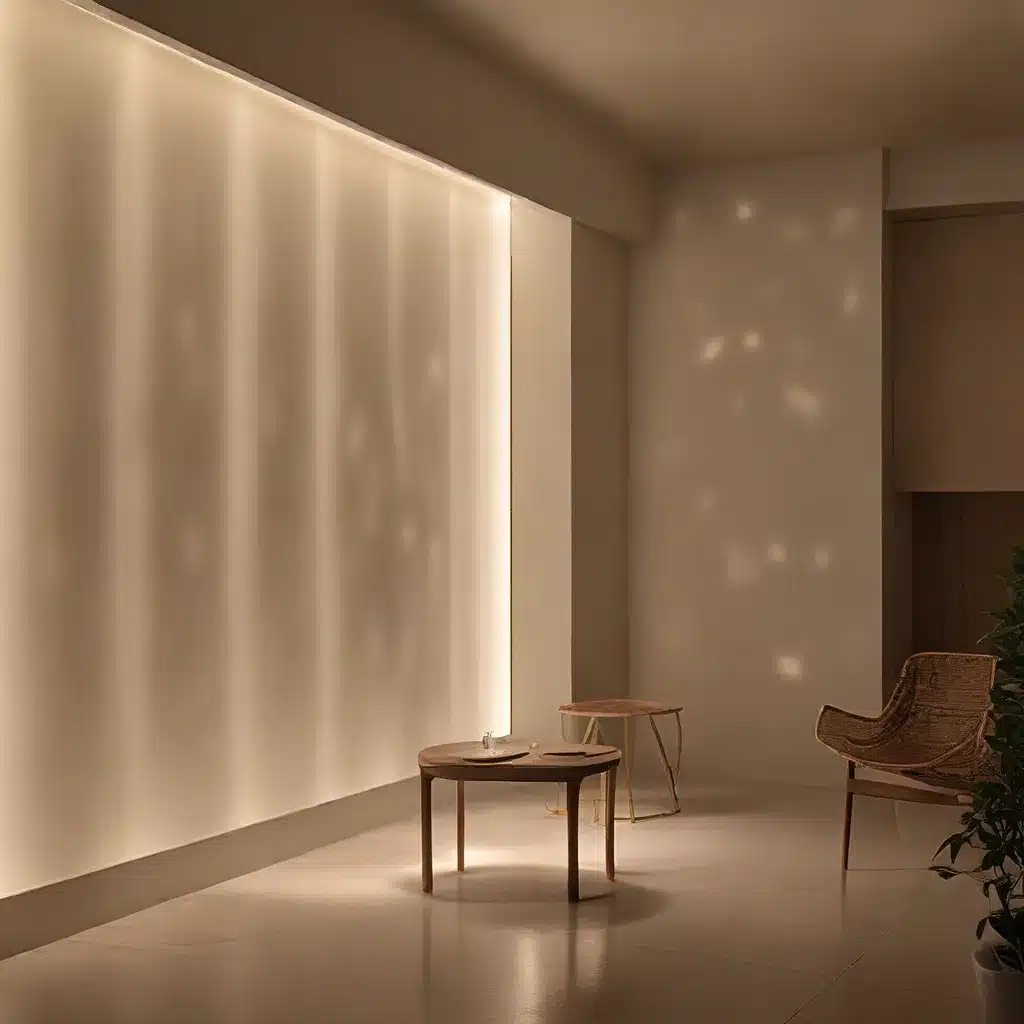
In the realm of interior design, lighting is a powerful tool that transcends mere functionality. It has the ability to transform spaces, evoke emotions, and create immersive experiences. From the warm glow of a cozy living room to the dramatic illumination of a museum gallery, lighting possesses the unique power to shape our perceptions and influence our moods.
The Art and Science of Architectural Lighting Design
Architectural lighting design is a delicate balance of art and science. It requires a deep understanding of the technical aspects of light, such as color temperature, intensity, and distribution, as well as the ability to craft emotionally impactful experiences. Lighting designers must masterfully combine these elements to create cohesive, multidimensional environments that cater to the senses and evoke desired responses from the occupants.
At its core, lighting design is about shaping perceptions and evoking desired emotions. Light has an undeniable impact on our moods and emotions, and by carefully controlling its characteristics, designers can intentionally cultivate specific atmospheres and set the tone for how people experience a space.
Indirect lighting, for instance, can soften the emitted rays to create an evenly distributed glow, enhancing the overall ambiance. Warm, soft lighting can foster a cozy, intimate ambiance, while cooler, brighter illumination often feels more energizing and invigorating. Strategic lighting plays a crucial role in accentuating architectural details and elements, drawing the eye to unique textures, curves, or materials, and revealing the dimensionality of a space.
Lighting as a Storytelling Medium
Beyond ambiance and emphasis, lighting holds the power to stir emotions and create truly memorable experiences within architecture. Thoughtfully designed lighting can evoke a sense of awe, wonder, or tranquility, becoming a means of visual storytelling.
For example, the soft, diffused light that filters through the perforated dome of the Louvre Abu Dhabi by Jean Nouvel creates a metaphorical “rain of light” that tells the story of Arabian architecture. In some architectural works, lighting becomes more than just a supportive element – it becomes the centerpiece and driving aesthetic.
Projects like the curved, seemingly holographic lighting installation of the Calgary Central Library by Avalon Holographics blur the lines between illumination and sculptural form, where light transcends its functional role to become an artistic design statement unto itself.
Layering and Balancing Light
Behind effective architectural lighting schemes are fundamental principles that guide critical decisions around light sources, placement, control, and layering. Lighting systems play a crucial role in human well-being and architectural design, impacting circadian rhythms and creating aesthetically pleasing environments.
Masterful lighting rarely relies on just one type of illumination. Instead, multiple layers of light are carefully combined to produce a cohesive, multi-dimensional environment. Ambient luminaires might provide overall illumination, while task sources enable specific activities and accent lighting adds depth by highlighting key elements. This strategic layering and balance of light sources culminates in a richer, more intentional atmosphere.
Integrating Natural and Artificial Light
In many projects, lighting schemes can’t be conceived separate from natural daylight. Skilled daylighting design harmonizes a space’s artificial lighting with incoming sunlight to create balanced, energy-efficient illumination. This could involve placing work areas near windows for task lighting or integrating daylight sensors to automatically dim artificial lights when sufficient daylight is present.
Smart control systems allow architectural lighting’s flexibility, efficiency, and functionality to be maximized. Automated dimming responds to daylight conditions, while zoned controls enable different space areas to be lit independently as needed. User controls like switches, sliders, and apps give occupants personalized lighting control, further enhancing the overall experience.
Lighting Design for Diverse Architectural Applications
Each broad category of architectural application carries its own unique lighting requirements and opportunities. Residential lighting nurtures comfort, warmth, and human-centric needs, while commercial spaces demand bright, energy-efficient lighting for visibility and safety. Cultural venues like museums prioritize fully controllable illumination to protect light-sensitive artifacts while allowing impactful exhibition lighting.
The most successful architectural lighting designs harmonize big-picture considerations like these with thoughtful adherence to core principles, resulting in environments that feel as functional as they are atmospheric.
The Evolving Landscape of Architectural Lighting Design
The history of lighting design has been significantly influenced by organizations like the Illuminating Engineering Society, a professional body dedicated to the science, engineering, and aesthetic design of lighting. As designers leverage new lighting technologies, materials, and creative techniques, they push the boundaries of how illumination shapes not just the pragmatic functionality of a space, but its very experiential and artistic essence.
The future of architectural lighting design promises even more pioneering applications. Energy-efficient LED and OLED sources enable complex, color-changing scenes, while circadian lighting aligns interior environments to our innate human cycles. IoT integration allows lighting to be seamlessly automated and controlled remotely, further enhancing the user experience.
As technical potential and creative expression intertwine, the future of architectural lighting design shines brilliantly, continuing to push the boundaries of how illumination can enhance human experiences within the built environment.
When it comes to creating truly remarkable interior spaces, working with a professional interior design firm can make all the difference. By leveraging their expertise in lighting design, these specialists can transform a space, evoking emotions and creating immersive experiences that captivate the senses.

